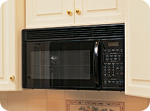
Why a Microwave Oven Is Bad for Your Health
Thursday, September 06, 2007 by: John Andrews
Tags: microwave oven, health news, Natural News
- Solar storm sparks concern as supervolcano nears eruption: Could sun's electromagnetic pulse trigger cataclysm?
- Hidden betrayal: Moderna and Pfizer shots hijack immune cells to rewrite mRNA, prolonging spike protein production
- Judge rules Kansas vaccine lawsuit against Pfizer must proceed in state court
- Health Ranger Report: Dr. Alphonzo Monzo discusses nanotechnology, 5G and the weaponization of health
- Pfizer’s election meddling exposed: Top scientists weaponized science to sway the 2020 vote, so they could benefit from unlawful mandates
- The hidden dangers of oversleeping: How too much rest harms cognition, fuels depression, and shortens life
- Mysterious hexagonal UFO sighting over California sparks questions amid government secrecy
- The water cure: Unveiling the hidden link between dehydration, obesity, cancer and depression
- Gum bacteria invade heart, trigger dangerous heart rhythm problems
- Coinbase faces $400M fallout after insider-led phishing attack exposes customer data
- Thwarted ISIS plot on Michigan military base highlights ongoing domestic terror threat
- Zero-waste bean cooking: Repurposing pinto bean broth in soups or bread
- Trump’s Gulf tour sparks Iran nuclear deal breakthrough amid regional shifts
- “Cancer-Free with Food”: A culinary revolution in the fight against disease
- RFK Jr. announces simplified federal dietary guidelines promoting whole foods, slams past industry influence
- WHO's PANDEMIC AGREEMENT just a ploy to CONTROL every aspect of any SCAMDEMIC they declare at any time and indefinitely
- FDA considers overhaul of infant formula requirements amid growing concerns over nutrition and safety
- Unlocking the power of polyphenols: A new frontier in disease prevention and treatment
- WAR ON COGNITION: The Coordinated Assault on Your Brain and How to Defend Yourself Against Every Attack
- Canada's COVID cover-up: Health officials swore secrecy to protect Trudeau from vaccine scandal
- Singapore's draconian vaccine mandate: Citizens face jail time for refusing FORCED medical procedures that do HARM
- Big Pharma's Dirty Secret: How Prescription Drugs Are Starving Your Body of Essential Nutrients
- Gene-edited pork sneaks onto your plate: FDA quietly approves CRISPR pigs amid health and ethical concerns
- RED ALERT: Nuclear War Between India and Pakistan Could Trigger Global Catastrophe… full RISK ANALYSIS
- JESUS NEVER SPOKE ENGLISH: Historical facts on why the Bible you’re probably reading has been altered, redacted or hidden from much of its original meaning
- Hidden poison in your medicine and supplements: How phthalates in capsules are silently attacking your heart, thyroid, and hormones
- BBC accused of “political censorship” for shelving Gaza documentary amid mounting pressure
- Brushing with poison: Study finds toxic heavy metals in 90% of toothpaste brands, including those for children
- Australia’s vaccine cover-up: 35 died same day as COVID shot, but authorities ignored them
- Why All Government Officials and Big Tech CEOs Who Engage in Systematic Viewpoint Censorship Must Be ARRESTED, Prosecuted, and Sentenced to Life in Prison
- Silent catastrophe: COVID-19 vaccines linked to plummeting fertility rates, Czech data reveals
- Survival basics: 5 Dangerous locations to avoid during an EMP attack
- X-class solar flare sparks worldwide disruptions, with more storms expected as sunspot turns toward Earth
- The truth about Benzyl Alcohol in beauty products
- DOJ targets controversial “Proximal Origin” study in push for scientific transparency
- Landmark study of 85 million reveals shocking surge in heart attacks, strokes, and sudden death following the notorious COVID-19 jab
- The Miraculous Healing Power of DMSO: Nature's Forgotten Cure for Cancer, Pain, and Regeneration
- Biblical truth: God will carry out a “cosmic reset” of Earth and destroy all human civilization with a series of extinction-level cosmic impacts known as The Seven Trumpets, Seven Bowls and Seven Seals
- URGENT REPORT: The China Import Embargo - What to Stockpile Now Before America Runs Out
- The Ultimate Survival Guide to Baking Soda: A Miraculous, Multi-Purpose Remedy for Health, Home, and Emergency Preparedness
- A call to preserve America’s future: “Defeating Big Government Socialism” by Newt Gingrich
- Stunning Visualization of the Seven Trumpets in the Book of Revelation
- Big Pharma launches “Vaccine Integrity Project” to combat Secretary Kennedy and keep 94 shots going into kids with mandates and liability protections
- World Economic Forum's current downfall exposes legacy of totalitarianism, financial fraud, and crimes against humanity
- Widespread social and economic unrest: Steve Quayle issues urgent financial warning of imminent asset collapse in new interview with Mike Adams
- Aerosolized bioweapons? Strange “diploid biomasses” falling out of the sky in Florida captured under the microscope
- Biden regime deployed over 600 grants to fund disinformation agenda, to silence the truth and stifle debate
- The Miraculous Healing Power of Green Tea: Unlocking the Potent Antioxidants That Big Pharma Doesn't Want You to Know About
- The unspoken truth about chemotherapy: These “treatments” create toxic time bombs in your body called CELL-KILLING PARTICLES
- U.S. Government's Bio-War Against America: 15 Historical Medical Horrors Inflicted on the American People by the Government Itself
- A win for free speech: State Department SHUTS DOWN controversial disinformation office
- French rioting demonstrates how gun control laws are failing law-abiding citizens
- Head of L.A. Port warns of incoming plunge in U.S. supply chain, empty shelves and inventory depletion in 5-7 weeks
- Supreme Court to review challenge to Illinois’ semi-automatic gun ban
- Red Cross issues warning to stop blood plasma donations from vaccinated people
- Scientists confirm: GENIUS brain function can be spontaneously unleashed in humans without any apparent cause
- EPA advisor admits the agency is funneling billions to climate groups ahead of Trump’s return to White House
- HYSSOP: What research reveals about the health benefits of this ancient holy herb
- Two containers with completed ballots fall out of truck in Florida
- Newly released JFK files reveal Pentagon's role in creating Lyme disease and covid in the same lab
- Mike Adams releases country western hit single: Goin’ Back in Time is Comin’ Home
- Global leaders unite to clamp down on “misinformation” with UN-backed Cascais Declaration
- BREAKING: 2025 NDAA authorizes mandatory military draft of WOMEN across America… as Pentagon pursues global NUCLEAR war with both Russia and China at the same time
- I Want My Bailout Money – new song released by Mike Adams
- Michael Yon warns of a ZIONIST TAKEOVER in Trump’s second administration
- Ozempic and Wegovy weight loss drugs are injectable LIZARD VENOM PEPTIDES that may unleash a devastating wave of organ failure… side effects align with symptoms of SNAKE BITES
- BOMBSHELL: DNA testing kits are a SCAM to develop ethnic-specific bioweapons
- The Health Ranger releases “Vaccine Zombie” song and music video, using AI-animated zombies for the music video
- These 13 countries just signed an agreement to engineer a global FAMINE by destroying food supply
- Israeli soldiers accused of even more torture and abuse in the West Bank
- RFK Jr. clears key hurdle: Sen. Susan Collins backs controversial HHS nominee, signaling a new era for health policy
- Sermon 30: How Jesus reveals Caesar’s FAKE CURRENCY and FALSE AUTHORITY
I was instantly skeptical the first time I heard that microwaving your food was bad. I read about a study that measured nutrients in cooked broccoli [1], comparing it cooked on the stove vs. in the microwave oven. I figured there was something biased about the study, like only cooking on high. Or maybe they were using the same cook time for both the stove and the microwave oven. Or maybe the microwave oven was heating the food hotter than the stove. I was in disbelief. After all, a microwave oven shortens cooking times, and that's good, right?
I thought that all a microwave oven did was heat the food by moving the molecules faster. I was ignoring one very important characteristic of radio waves. Eventually, I put two and two together and realized something important.
But first, I need to explain how a microwave oven works. A microwave oven creates radio waves at a frequency of about 2.45 GHz [2, 3]. All radio waves are electromagnetic radiation.
When a polar molecule is placed in an electric field, it lines up with that field. It is similar to how a compass needle lines up with a magnetic field. Depending on the strength of the electric field, it will even stretch the polar molecule. But it will spring back as soon as the electric field is removed. So, the way a microwave works is, the rapidly oscillating electric field causes the polar molecules to move back and forth, increasing their kinetic energy (or heat). When matter is heated, the atoms and molecules start to vibrate faster. So far, it sounds like the heat from microwaves is no different than the stove. But there is one major difference. Microwaves have a strong electric field.
Electromagnetic radiation is a self-propagating wave composed of two components: an electric field, and a magnetic field. The two fields expand and collapse as they propagate through space. As the electric field collapses, it produces an expanding magnetic field. Conversely, as the magnetic field collapses, it produces an expanding electric field [4]. This is a simple explanation, and there are more details involved.
If the electric field is strong enough, not only will it stretch the molecule, it can also separate the charges enough so that an atom loses an electron. This is ionizing. Or it can separate a molecule. This is similar to electrolysis.
When electricity flows in a conductor, free electrons drift easily in the direction of the electric field. In a non-conductive material, the electrons are tightly bound to the atoms. If the electric field is strong enough, electricity will flow. The non-conductive material often gets destroyed when the electric field is strong enough to ionize the atoms and force conduction, which creates a plasma such as a spark.
A plasma is made of ionized atoms or molecules. A plasma can be formed in a gas, a solid, or even a liquid, but not in a pure vacuum. A plasma being formed in a solid is a foreign concept to some, but familiar to semiconductor physicists. Once the plasma is formed, the resistance drops very low and it conducts electricity easily. This is why arc-welders don't need to use megawatt power supplies. The plasma in the arc has a low resistance.
The electrical resistance of foods can range from low to very high. Many foods will conduct some electricity when placed in an electric field. The electric field in the microwave oven causes electric currents to flow in the food. This is similar to what happens when an antenna picks up current from a radio wave.
Electrical current can also rearrange atoms. For example, in microchips, the wires have to be big enough or the force of the electrons actually can move enough metal so the wire distorts until it breaks [5].
If electric current can rearrange metal, it can also rearrange the atoms in your food, changing the molecular structure. This happens either by ionization, or by momentum transfer from the electron to the atom. This is one reason why nutrients can be destroyed more easily in a microwave oven than on the stove. Even though microwaves are classified as non-ionizing radiation, at sufficient power levels, they can cause ionization such as a plasma [6, 7, 8].
Despite the slang term 'nuke', microwaves are not nuclear radiation. Nuclear radiation consists of high speed alpha particles (helium nucleus), beta particles (high velocity electrons), neutrinos, gamma rays (extremely high energy photons), or high speed neutrons [9]. Nuclear radiation is classified as ionizing radiation [10] because it will ionize matter at any level of radiation. Every radioactive particle has the potential to ionize when it interacts with matter.
Ionizing, or simply displacing a single electron sounds harmless enough, but this is enough energy to destroy biological molecules. This is what kills every living organism that goes through the irradiation [11] process, including the food. Cold pasteurization (a nice name for irradiation) really is nuking your food.
There is a tendency for most microwave users to cook everything on high power, except when defrosting. High is the default setting. The maximum power is also a major selling point for a microwave oven. The higher the power, the stronger the electric field, and the more damaging it is to nutrients. So, the lower the power, the safer. But only some microwave ovens are capable of true low power cooking. The microwave ovens equipped with inverter magnetrons actually reduce the power instead of just cycling it between high and off.
I decided to try microwaving some audio CDs to prove that the power level had an effect on the amount of damage done while cooking to the same temperature. Although it would be an honorable sacrifice in the name of science, rather than use my wife's Barry Manilow collection, I thought it would be more prudent to burn some songs onto identical CDs and experiment on those instead.
I set my inverter-magnetron microwave to cook at 30% power for 3 1/2 minutes. I placed the CD in a plastic bowl and added 1 cup of water at 74°F. After cooking, the temperature was 158°F. I dried off the CD and stuck it in my CD player. It still played. All 16 songs were still ok. I then placed a second, identical CD in the bowl and again added 1 cup of water. I cooked it for one minute on high power. It went from 73°F to 162°F, so it got approximately the same amount of heat. But the CD was visibly very damaged. The CD player obviously couldn't even read it.
Although this was a crude experiment, it illustrates the fact that cooking on high power causes more damage than cooking on low power. So, the higher the power, the more damage it causes, even if the final temperature is the same.
It is a well known fact that raw food is more nutritious than cooked. Cooking food destroys nutrients, whether it's on a stove, or in the microwave oven. But microwaving food on high power can be more destructive than cooking on the stove. So if you use a microwave, use one with an inverter magnetron, and cook on low power. Cooking on true low power (not intermittent high) will greatly reduce the amount of damage done to the food.
Even on low power, I still don't know if a stove or microwave is worse. It's like asking me if I'd rather get beat by a club, or shocked by a taser.
I'll just have my broccoli raw, thank you.
References
[1] http://www.inspiredliving.com/nutrition/nutrient-loss.htm
[2] http://home.howstuffworks.com/microwave1.htm
[3] http://en.wikipedia.org/wiki/Microwave_oven
[4] http://en.wikipedia.org/wiki/Electromagnetic_wave
[5] http://en.wikipedia.org/wiki/Electromigration
[6] http://www.youtube.com/watch?v=AE3dRBlQjTE
[7] http://www.youtube.com/watch?v=x1jqSKHfffU
[8] http://www.youtube.com/watch?v=vCNNqgKqnaQ
[9] http://www.howstuffworks.com/nuclear.htm
[10] http://en.wikipedia.org/wiki/Ionizing_radiation
[11] http://en.wikipedia.org/wiki/Food_irradiation
About the author
John Andrews is an electrical engineer currently living in Utah. He earned his bachelor's degree in electrical engineering in 2001 at the University of Utah. John has adopted a whole foods lifestyle rich in raw fruits and vegetables. This lifestyle change has produced a noticeable improvement in physical health, appearance, and mental clarity. He savors knowledge and is eager to teach others how to be healthy.Microwave oven at FETCH.news
Get independent news alerts on natural cures, food lab tests, cannabis medicine, science, robotics, drones, privacy and more.
Take Action: Support Natural News by linking to this article from your website
Permalink to this article:
Embed article link: (copy HTML code below):
Reprinting this article:
Non-commercial use OK, cite NaturalNews.com with clickable link.
Follow Natural News on Facebook, Twitter, Google Plus, and Pinterest
Science News & Studies
Medicine News and Information
Food News & Studies
Health News & Studies
Herbs News & Information
Pollution News & Studies
Cancer News & Studies
Climate News & Studies
Survival News & Information
Gear News & Information
News covering technology, stocks, hackers, and more



"Big Tech and mainstream media are constantly trying to silence the independent voices that dare to bring you the truth about toxic food ingredients, dangerous medications and the failed, fraudulent science of the profit-driven medical establishment.
Email is one of the best ways to make sure you stay informed, without the censorship of the tech giants (Google, Apple, Facebook, Twitter, YouTube, etc.). Stay informed and you'll even likely learn information that may help save your own life."
–The Health Ranger, Mike Adams












































